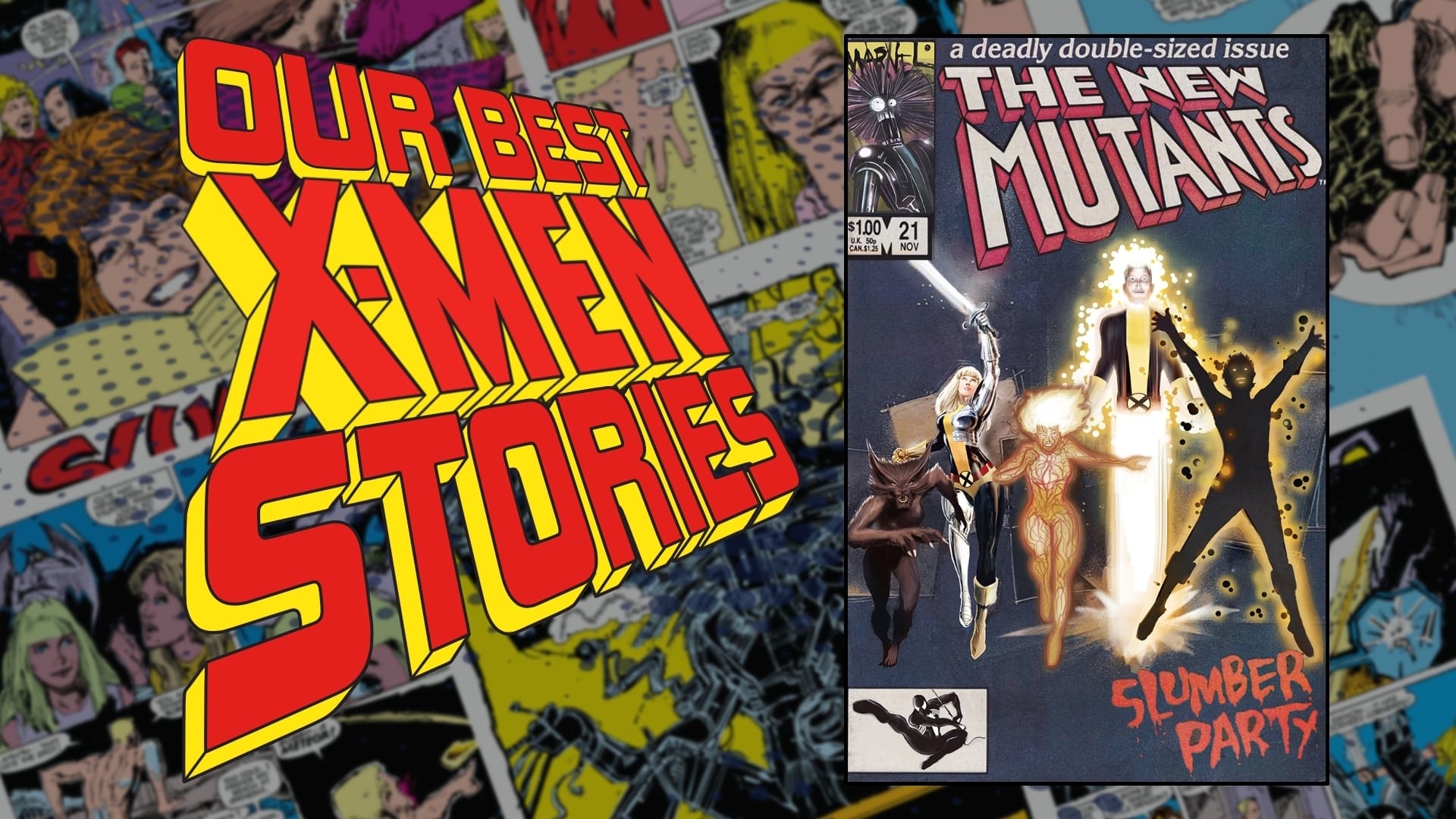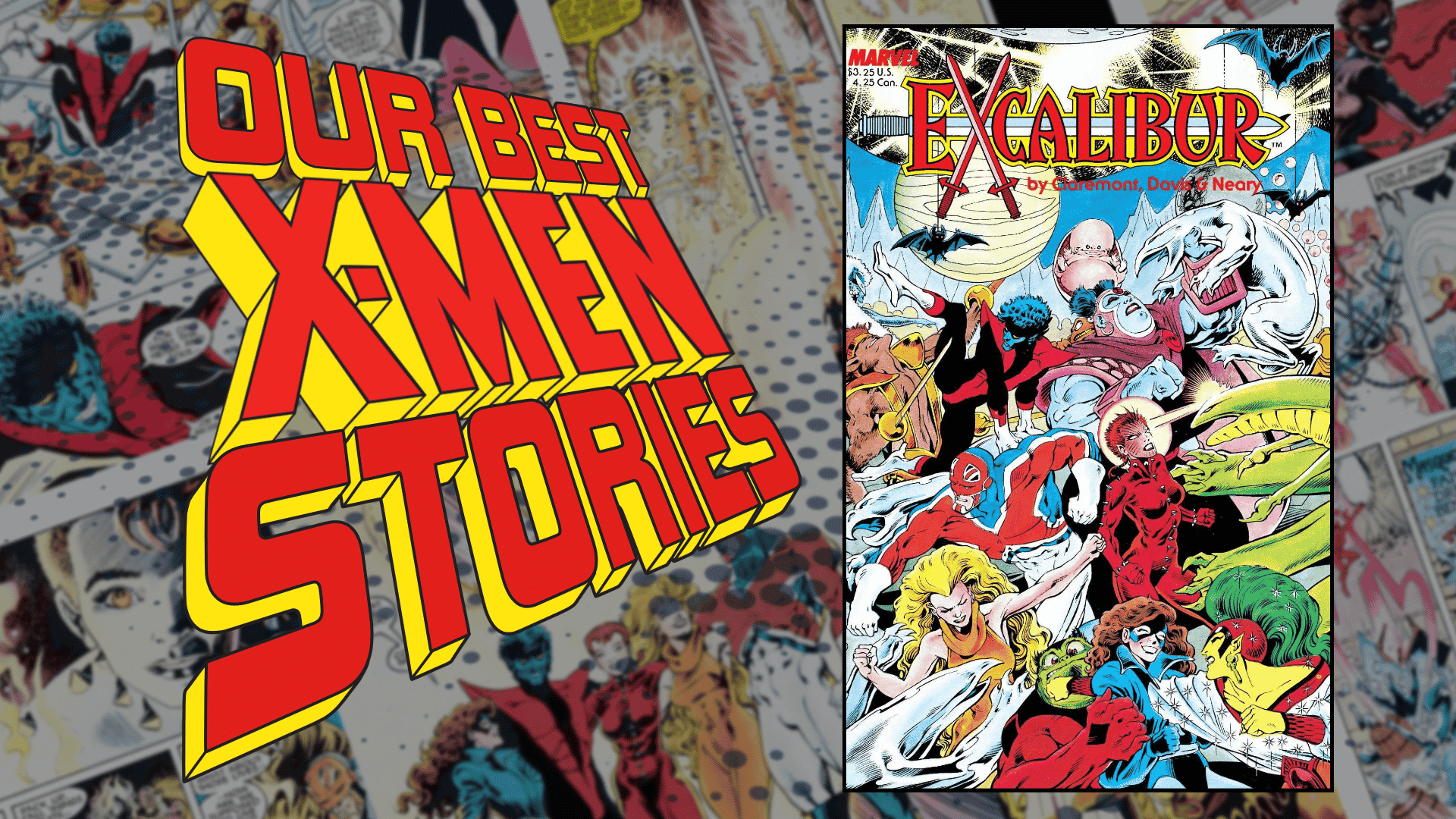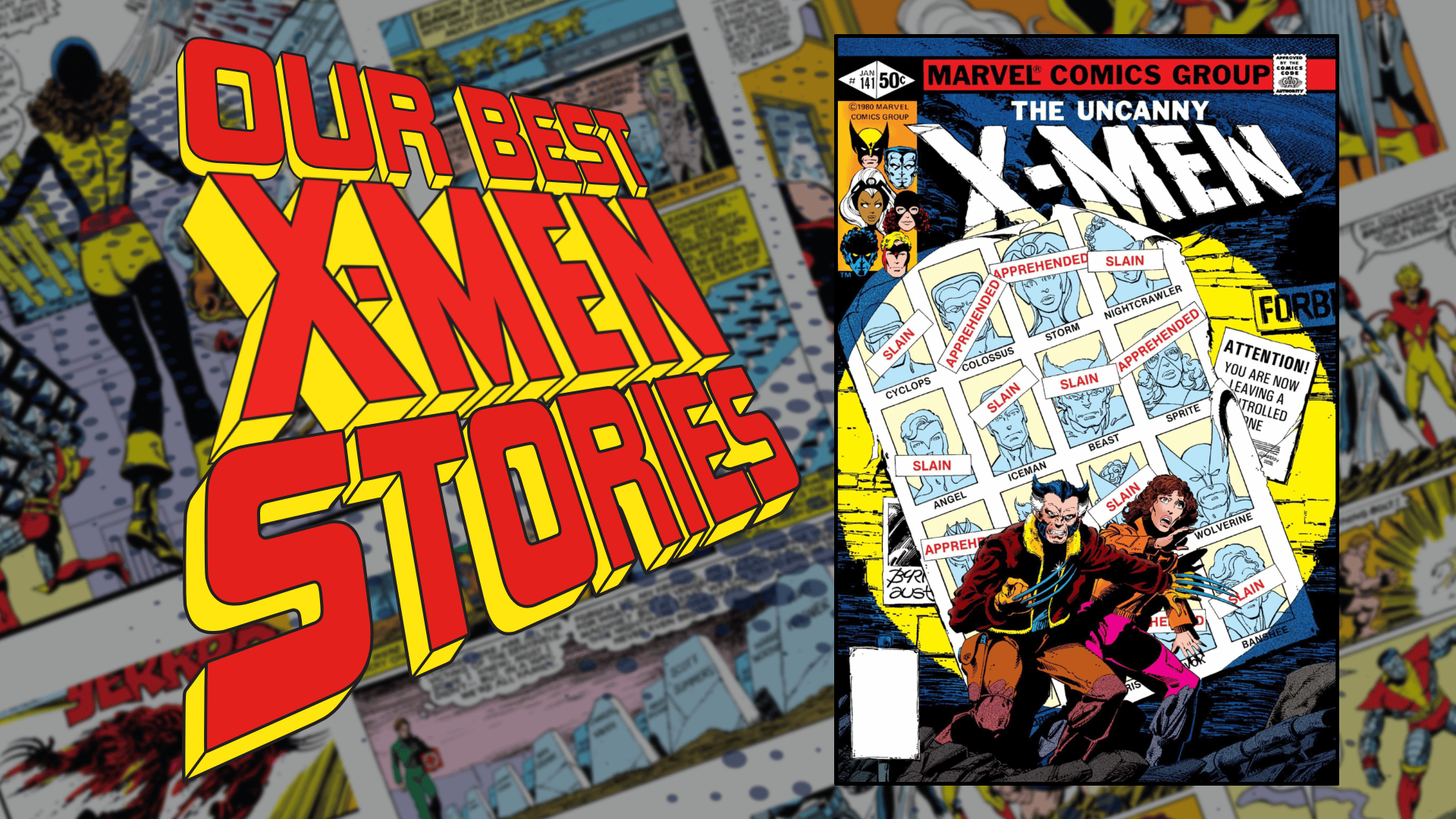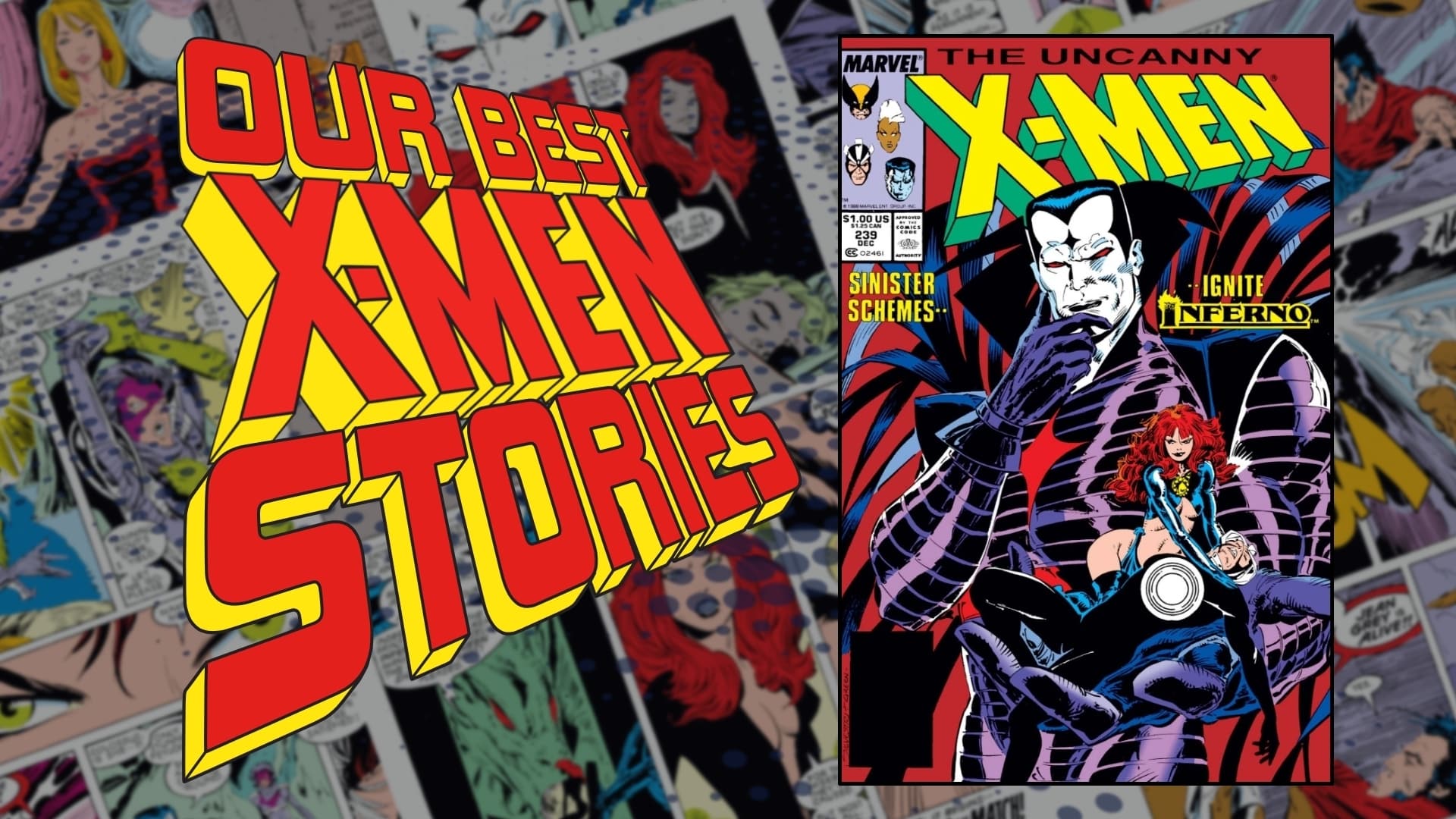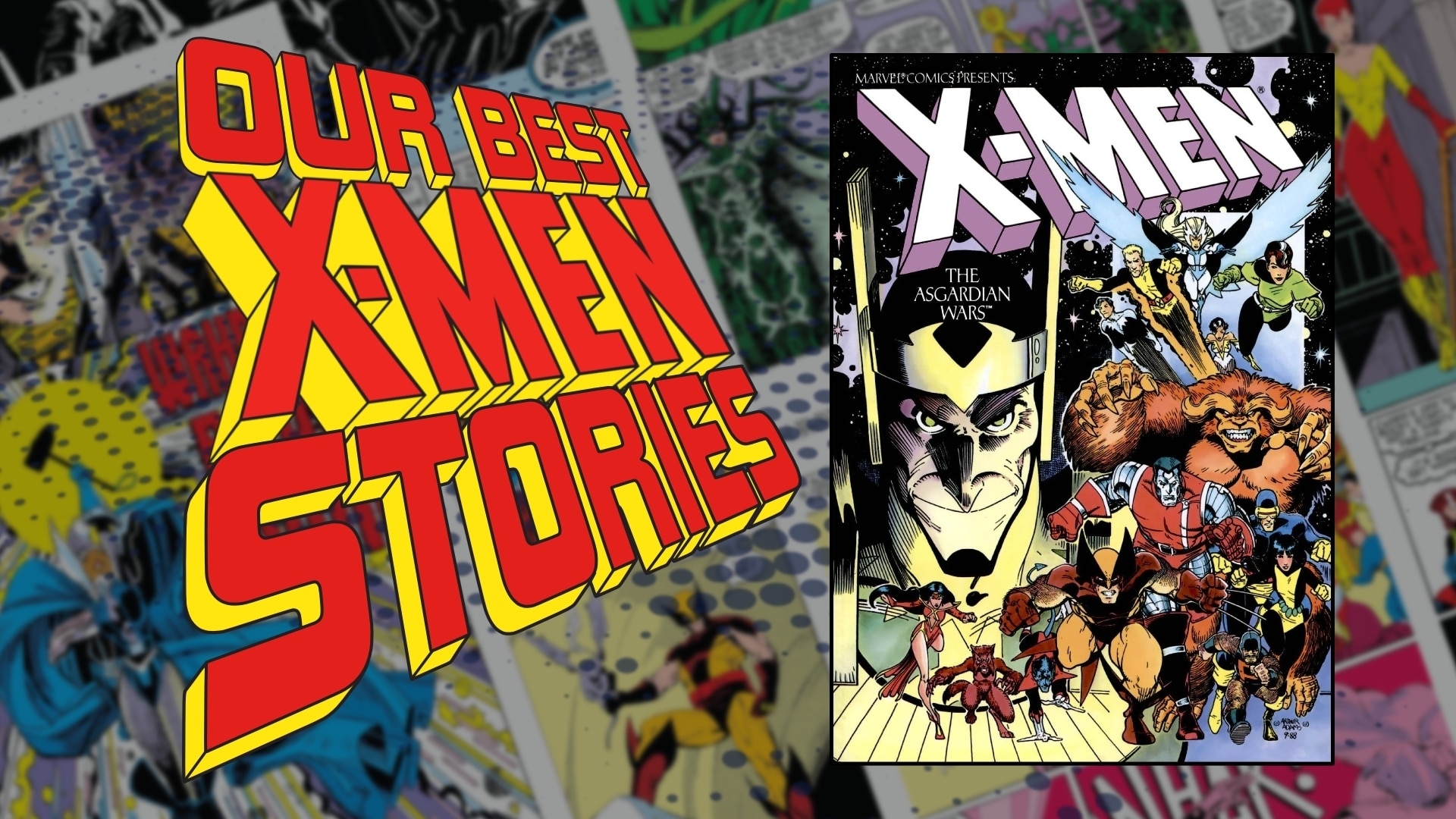In a franchise that has run for over 50 years, there is bound to be debate about which story is “the best”. Listicles will be written, podcasts will be recorded, debate will be never ceasing. In this series, we’ve gathered ComicsXF writers to share what they personally think are their best X-Men stories ever.
New Mutants #21 (1984), written by Chris Claremont, penciled and inked by Bill Sienkiewicz, colored by Glynis Oliver, and lettered by Tom Orzechowski and Lois Buhalis.
Stories in company-owned superhero comics have to include fights, or at least visible conflicts that might draw on the heroes’ powers. Good ones show heroes whose costumes, or outfits, or powers, we like to see. Great ones do something new with the visual resources common to comic books, or open up the inner life of a character we didn’t know before, or both. Mutant stories, the best ones, acknowledge mutant community, or the mutant metaphor, or the aspects of individual mutants that make them stand out, feel excluded, or struggle with the social and physical aspects that set mutants apart. And stories about teenagers, the best ones (that is, the best stories, not the best teens), address both what makes teen social life stand out (large fluid social groups, or intense loneliness, or impulsive, no-future behavior) and what teens and adults tend to share: we want to be loved, or at least liked, or at least included, or not shunned.
New Mutants #21, “Slumber Party” (1984), written by Chris Claremont with art by Bill Sienkiewicz, says and does all those things. First of all—and this might be the first thing you’d notice if you picked it up when it came out—it showcases Sienkiewicz’s then stunning, still remarkable art. After a Marvel house style apprenticeship and neato work on Moon Knight, Sienkiewicz debuted on New Mutants with the more celebrated “Demon Bear” storyline, running in issues 18-20. That one had checkerboards and frame-breaking panel-border experiments and nightmares and color blocks and a bear that seemed to eat the entire comic book. It’s a stunner, a rule-rewriter, a door-opener—and it sets up the subtler masterwork that is New Mutants #21.

The visual splendor begins as soon as the book does. Sienkiewicz, who inks his own pencils, colorist Glynis Wein and co-letterers Tom Orzechowski (of course) and Lois Buhalis set up an introductory page that feels like zombie horror, with bodies queued up in deep shade approaching the blue-black mansion. Then the page turn gives us a double splash page, with every color in the early-1980s printer’s repertoire, depicting a wild girls-only party (Slumber Party!) with torn pillars, celebrity magazines, kids we don’t recognize (normie girls from the local public high school), and… is that Rahne Sinclair cowering amid the crowd? Is Illyana Rasputin calmly concentrating on the boom-box music, head down? Can mutant girls have fun and fit in with the rest? Do they wish they could? What if you’re Dani Moonstar, the New Mutants’ leader, currently in a wheelchair, and you “want to boogie,” as she says? What if you’re not a girl?
“Slumber Party” opened on this scene—a social dilemma for cis girl readers, an impossible aspirational moment for trans girls—at a time when many Marvel superhero comics did not even pass the yet-to-be-invented Bechdel Test.The scene was—is—beautiful, expressionist, not-quite-realist in the Sienkiewicz fashion, interested in teens’ faces and expressions (wary, delighted, curious, enthused), at a time when too many superhero artists drew teen girls as sexy adults. And just when a new reader thought she or he or they might have wandered into a romance comic, we get the perennial, improbable but ideal reader figure Lockheed the dragon, exhaling fumes and watching the party, muttering a too-human chuckle. From there, we jump to another spectator, this one far away on an asteroid base orbiting Earth. Magneto, a man who doesn’t scare easily, stands bathed in spectacular, anxious yellow as he declares, “a celestial object… heading straight for me! It’s too close… coming too fast—!!”
Kaboom: it’s Warlock, a terrified cluster of circuitry barely wrapped up in a humanoid form. He’ll spend the rest of the issue terrified and hungry and entirely confused about what’s food and what’s a friend, what’s organic and what’s inorganic, whether refrigerators can talk to him (turns out nope) and whether he’s in the kind of superhero comic that has to end in a fight (again, nope, though it’s a close call). He’s headed toward Earth, toward Westchester, toward the Xavier School, and he could be a malevolent invader… or a misunderstood Frankenstein’s monster figure… or… a friend?
Throughout the issue, Sienkiewicz and Claremont go on excelling in their repertoire of bodies and social life and mixed-up genres, horror, romance, science fiction and superhero business. Illyana resolves to turn Rahne “into a fairy princess,” brandishing burgundy lipstick like it’s a sword. Sam and Roberto mope together outdoors, and Rahne slugs Sam when he doesn’t recognize her made-up face. Illyana, who can always keep it together when everyone else is falling apart (because she’s been through so much worse) explains “private party—no boys allowed,” and Sam cannonballs after Warlock into a lake.
The entire creative team outdoes themselves in an underwater sequence full of deep blues, with the occasional Kirby dot, and bodies in motion that overrun the panels… and, since we’re in a classic Claremont comic, one of the characters (Sam, naturally) tells us what to read and where Claremont gets his ideas: Robert A. Heinlein’s “The Door Into Shadow” (properly “The Door Into Summer”). Then Sienkiewicz gets another full page for another tour-de-force: Warlock opens himself up, adopting a vulnerable physical pose for the first time.

“Thoughts and form! Wear! Lifelight fading!” Warlock cries, circuitry all over the place. “Yearning. Oblivion. Magus—No!” Turns out he’s in flight from his malevolent father-creator, Magus, who will become a recurring villain; on Warlock’s planet, the Technarchy (later named Kvch, after Sienkiewicz), children-sons must kill their father-creators to take their place in the hierarchy. Wanting no part of that conflict, a wholly inorganic “mutant” whose mutation is wanting friends, Warlock has fled to Earth and found the one group of teens most likely to take him in. “Help him! Rahne exclaims, wolfed out and very much over the slumber party crew. “We canna abandon the lad! He’s the same as me—as all of us—cast out an’ hated… simply because of what we are, thrown into a new place, among strangers… survived… b’cause I have friends!”
It’s not a subtle speech, but the speech and its aftermath achieves a lot while cementing Claremontian themes and signaling his ambitious long-form storytelling. Warlock and Rahne, and then Warlock and Professor Charles Xavier, shake hands, which also shows that Warlock has learned how to touch people without corrupting them or draining their life force. The final caption on the final full-page panel labels this moment. quite rightly, “A Beginning.”
And so it is. It’s also an introduction to the team for another reader-surrogate figure, Doug Ramsey, who has appeared in the comics as Kitty Pryde’s friend, but does not know he’s a mutant until this issue. We find out, and so does Doug, that he can speak, read, and understand any language, including computer languages and the alien codes of Warlock’s techno-organic species. Doug can establish first contact, “playing with light and sound… trying to evolve a common basis for a language, then the language itself, so we can talk to him before it’s too late.” ‘Lock and Doug will be literally inseparable for most of the run until Doug’s death. They’re partners, best friends, and something harder to name—Doug even wears Warlock as armor when they go into battle together. What else are friends for?

“Slumber Party” might be the most concise, most powerful single-issue statement of found family, mutual support for various outcasts, and out-groups (disability, queerness, neuroatypicality, immigrants, ESL speakers, and more), in the entire canon of Marvel mutant comics, which includes hundreds of comics making that statement. It’s also the most various, and the most fun, of the early 1980s openings onto Bill Sienkiewicz’s art, and the one whose visual spectacle folds in the greatest number of genres. It’s fun. It’s moving. It might make you cry (Rahne cries). It speaks to young readers (I was… 12? 13? when I picked it up in a drugstore) without talking down to adults.
And… (deep breath)… it’s also about as compact and efficient a trans allegory as this comic absolutely full of trans allegories could get. There’s a party you get to see (but not attend) where girls do girl things, while a couple of idealized boys (who read science fiction) do boy things outside. Then they find a completely alien entity, properly neither girl nor boy, who gets along well with computers and just wants friends and doesn’t look like anything else on Earth. That entity (whose pronouns are he/him, because it’s the 1980s and he/him pronouns are the unmarked case) needs to flee patriarchy and toxic, fight-based masculinity and find a home that will accept all genders, a home where femme ways are available but not mandated (witness Rahne’s experimental makeover). The alien entity literally plugs in (his hand becomes an electrical plug) and finds “joy! strength! health!” because the misfit girl and the misfit guy and the mixed-gender social group trusts him.
“The New Mutants are making friends their own age,” Professor X muses, and how right he is. You might not fit in anywhere else, or anywhere real, or anywhere on your own world, or in any single-gender group anywhere. But you’ve got the New Mutants. You fit here.

Stephanie Burt is Professor of English at Harvard. Her podcast about superhero role playing games is Team-Up Moves, with Fiona Hopkins; her latest book of poems is We Are Mermaids. Her nose still hurts from that thing with the gate.

